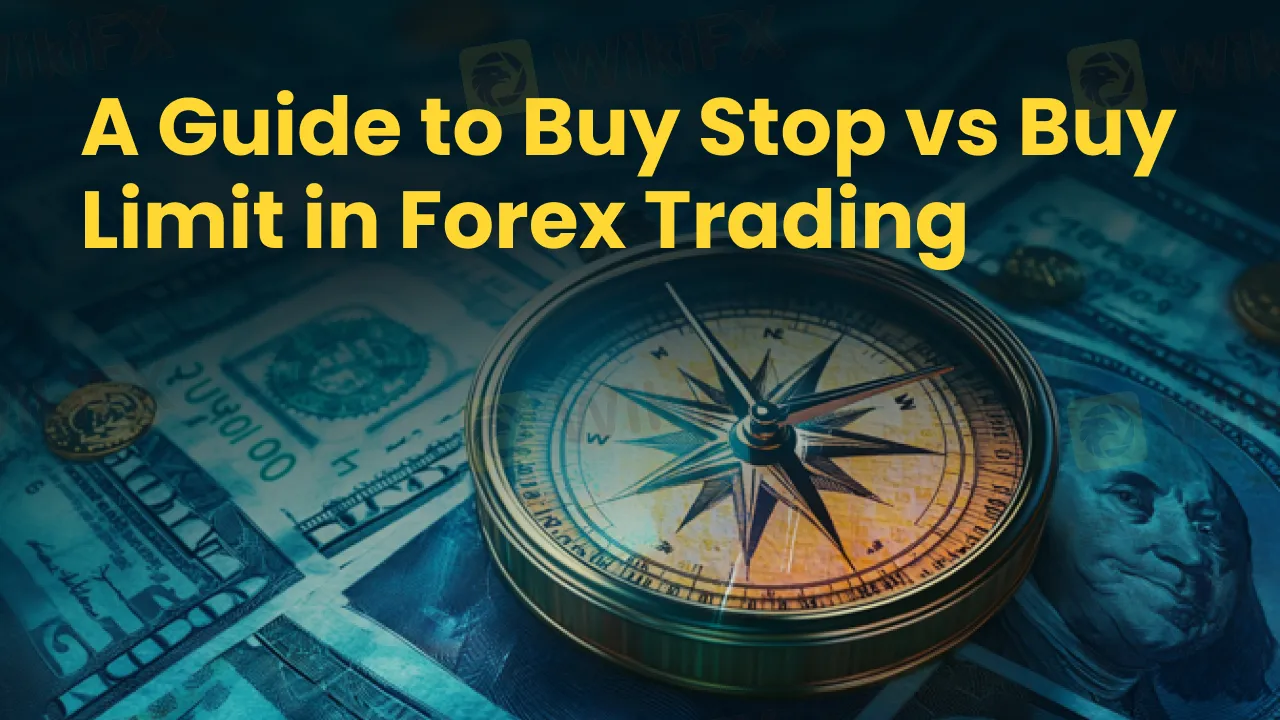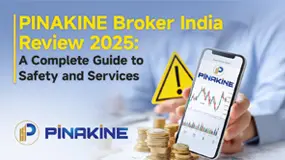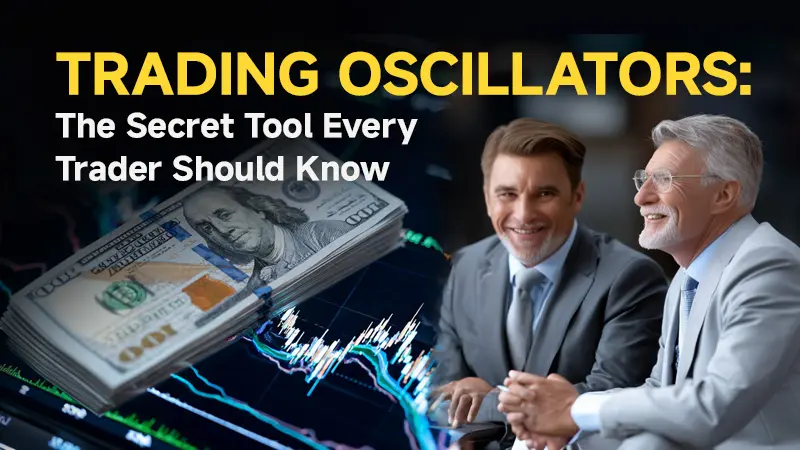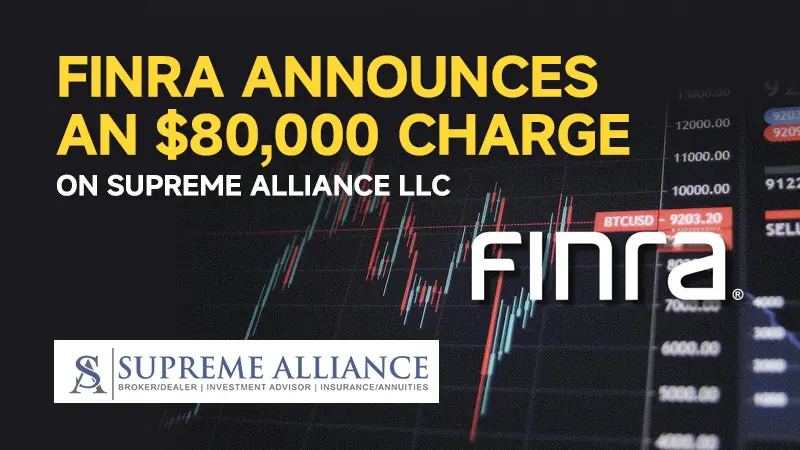简体中文
繁體中文
English
Pусский
日本語
ภาษาไทย
Tiếng Việt
Bahasa Indonesia
Español
हिन्दी
Filippiiniläinen
Français
Deutsch
Português
Türkçe
한국어
العربية
A Guide to Buy Stop vs Buy Limit in Forex Trading
Abstract:Want to make a mark in forex trading by seizing hidden growth opportunities or preventing capital loss? Learn the art of locating orders. With an in-depth understanding of order functionality involving the impact on trades, traders can successfully navigate the forex market. As far as buying is concerned, traders need to acquaint themselves with a buy limit and a buy stop. These two orders play a critical role in helping traders enter and exit the market efficiently.

Want to make a mark in forex trading by seizing hidden growth opportunities or preventing capital loss? Learn the art of locating orders. With an in-depth understanding of order functionality involving the impact on trades, traders can successfully navigate the forex market. As far as buying is concerned, traders need to acquaint themselves with a buy limit and a buy stop. These two orders play a critical role in helping traders enter and exit the market efficiently. Traders, while utilizing these two options efficiently, will be able to attain their profit targets or position stop losses.
Buy Limit Order
If you are asking, what is the buy limit in forex trading? Here is the answer. A buy limit order is a purchase order filled at a prespecified price or better. This order is categorized as pending as it rests at the market lower than the existing price until the execution time. The order remains filled once price action reaches the designated buy limit. Traders can use these orders to enter the market in a long or bullish manner. These orders can also serve as profit targets for short positions.
Illustration Showing the Market Entry Using Buy Limit Orders in Forex Trading
Lets assume Trader A keeps a bullish bias on EUR/USD. Rates are moving upward around intermediate-term highs exceeding 1.2075. Trader A reckons that the market will attract mass bidders above the psychological barrier, i.e., 1.2000, following a potential price retracement. To join the uptrend at an attractive price, Trader A executes buy limit orders to enter the long side of the market. A buy limit order is thus placed at 1.2009. If the price touches, the order will be filled at 1.2009 or better. The filling of the buy limit order leads to the new and active long position.
Profit Target
As buy limit orders are placed below the current price, they can be used accordingly as profit targets for bearish positions. Assume Trader A feels the bearish market trend toward the USD/CHF near 0.9300. As the price comes near it, Trader A can use the buy limit order as a profit target.
Trader A creates a short position from 0.9299 by executing a market order, a sell stop or a sell limit order, based on the price location. For example, if Trader A aims for a 25 pip again. So, if the buy limit order is placed at 0.9274 and the USD/CHF drops to it, the order will be executed, letting you achieve a 25-pip gain on closing the position.
Buy Stop Order
A buy stop order integrates the functionalities associated with a buy order and a stop-market order. These are pending orders as they rest at the market until execution. However, buy stop orders remain above the existing price and are executed at the best available price. In forex trading, traders can use buy stop orders to make a bullish market entry or stop losses for open short positions.
Market Entry Using Buy Stop Order
Traders can resort to buy stop orders to open new and long market positions, like in the case of buy limit orders. However, the process differs here. As the buy stop order remains above the existing price action, traders can enter the market with price action without waiting for a market retracement. This is particularly handy when implementing momentum or breakout trading strategies.
Assume that Trader A yet again adopts a bullish stance on EUR/USD, which is trading in a consolidation pattern near 1.1990 for a long time. The trader executes the buy stop order on a breakout past 1.2000. Here, the buy stop order is placed at 1.2001. Should the EUR/USD trade at 1.2001, the buy stop order will be executed at the best available price, paving the way for a new long position in EUR/USD.
Stop Loss
Stop loss orders, a vital forex risk management tool, can prevent the trader from witnessing massive losses. As buy stop orders are placed above price action, active bearish positions become less. Practically speaking, buy stop orders help limit losses by automatically closing short positions when price rises..
For example, Trader A decides to short EUR/USD from 1.1999. Also, the trader decides to aim for a buy limit profit target at 1.1974 and conforms to a 1:1 risk-reward ratio. So, Trader A places the buy stop order at 1.2024, which is 25 pips from the entry and conforms to a 1:1 risk-reward ratio parameter. Should EUR/USD trade at 1.2024, the buy stop order comes into play, selling the short position at the best price. With this, Trader A will have a 25 pip loss + or - any realised slippage.
Summing Up
Understanding the difference between buy stop and buy limit orders is essential for executing precise and strategic trades in the forex market. While buy limit orders are ideal for entering at lower prices during market pullbacks or for setting profit targets on short positions, buy stop orders are used to catch upward momentum or to set stop losses on short trades.
Introducing WikiFX Masterminds, where experts share valuable forex insights.
Join it to up your forex game.
Here is how you can do it.
1. Scan the QR code placed right at the bottom.
2. Download the WikiFX Pro app.
3. Afterward, tap the ‘Scan’ icon placed at the top right corner
4. Scan the code again.
5. Congratulations, you are part of the community.

Disclaimer:
The views in this article only represent the author's personal views, and do not constitute investment advice on this platform. This platform does not guarantee the accuracy, completeness and timeliness of the information in the article, and will not be liable for any loss caused by the use of or reliance on the information in the article.
Read more

PINAKINE Broker India Review 2025: A Complete Guide to Safety and Services
As online trading grows in popularity, Indian traders are always looking for brokers that offer good deals and fair conditions. PINAKINE has become one of these companies, getting attention by promising high leverage and many different account options. This broker, officially called Pinakine Liquidity Limited, has been operating for about one to two years and has made many people curious. Traders want to know the answer to the most important question: Is PINAKINE a real and safe place to invest money, or are there hidden dangers behind its attractive offers? Read on to know the answer.

Trading Oscillators: The Secret Tool Every Trader Should Know
If you’ve ever looked at a trading chart and wondered how traders know when a price is “too high” or “too low,” the answer often lies in trading oscillators. A trading oscillator is a type of technical indicator that helps traders measure the momentum of price movements. In simple terms, it tells you when a currency pair, stock, or commodity might be overbought or oversold — which can signal a potential reversal.

FINRA announces an $80,000 charge on Supreme Alliance LLC
The Financial Industry Regulatory Authority (FINRA) has announced that Supreme Alliance LLC has agreed to pay a fine of $80,000 as part of a settlement addressing supervisory and compliance failures related to variable annuity transactions and representative investigations.

Voices of the Golden Insight Award Jury - Simon So, Chief Experience Officer of Hantec Financial
The “WikiFX Golden Insight Award” is dedicated to uniting industry forces to jointly build a safe and robust forex ecosystem, driving industry innovation and sustainable development. Now it launches a brand-new interview series — “Voices of the Golden Insight Award Jury”. Through in-depth interviews with authoritative jury members, this series will explore the future landscape of the forex industry and the shared mission of industry elites in enhancing innovation, compliance, and sustainable development.
WikiFX Broker
Latest News
Angel one 2025 Review & Complaints
Latest FCA Daily Alerts and Consumer Warnings for 2025
Webull Widens Crypto Futures with Coinbase Derivatives
Is Nash Markets Regulated or Risk? Truth About Nash Markets’ License & Withdrawal Issues
CySEC Blocks Certification Access to Combat Advisor Impersonation
Exclusive Markets Under the Scanner: Traders Report High Swap Charges, Deposit Discrepancies & More
Pinched By Penny Shortage, US Retailers Beg Congress To Step In
PINAKINE Broker Review: A Complete Look at Its Services and Risks
Voices of the Golden Insight Award Jury - Simon So, Chief Experience Officer of Hantec Financial
Saxo Bank Japan Expands European Stock Portfolio with UBS, Ferrari, and Other Major Names
Currency Calculator




